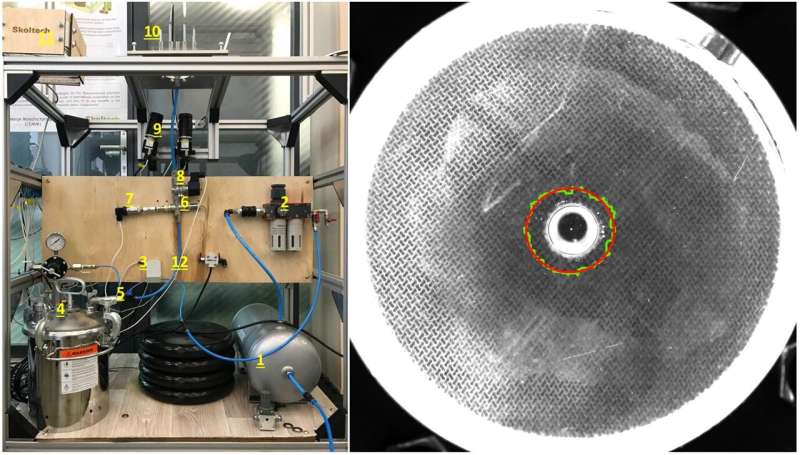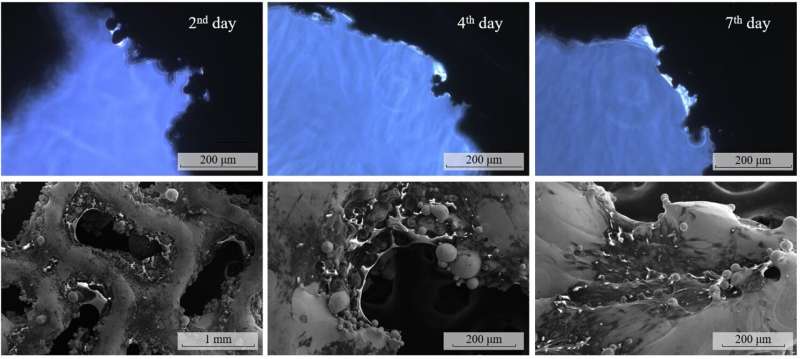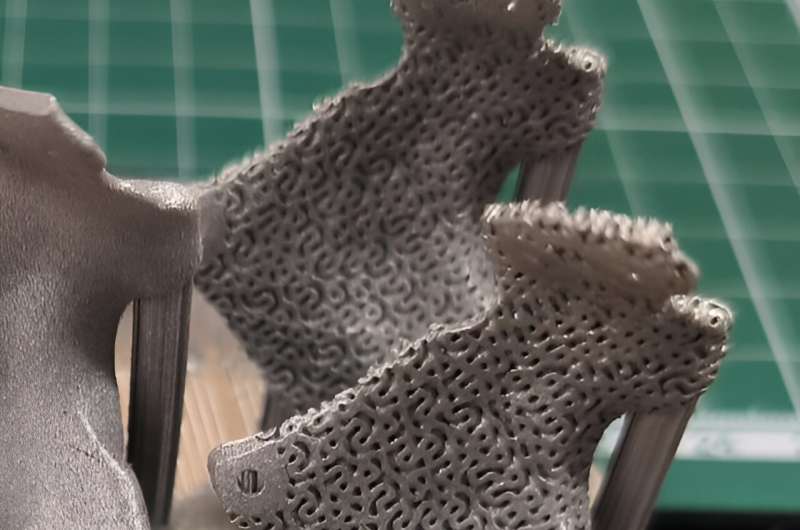This article has been reviewed according to Science X's editorial process and policies. Editors have highlighted the following attributes while ensuring the content's credibility:
fact-checked
trusted source
proofread
Researchers introduce technology for producing biomimetic implants with specified permeability

Researchers from Skoltech, National University of Science and Technology MISIS, and Saint Petersburg State Marine Technical University have shared results of their new study exploring the permeability of biomimetic implants. The paper is published in the International Journal of Bioprinting.
Properties of biomimetic implants are similar to those of real organs and tissues. By reproducing the structure and mechanical characteristics of atrophied tissues and organs, biomimetic implants engraft better. This helps improve patients' rehabilitation after operations.
Leading author of the study Stanislav Chernyshikhin, a Ph.D. student from the Materials Center at Skoltech, discusses biomimetic implants: "If mechanical response of an implant does not match properties of the bone tissue in the places of their connection—for example, if the implant is stiffer—the bone carries less load and the tissue, according to the Wolff's law, becomes brittle."
In a series of studies, the research team addresses a comprehensive task and develops a biomimetic implant made of a nickel-titanium alloy, which demonstrates superelasticity. The stress-strain curves of a real bone and this material in the superelastic state are almost similar, but nickel-titanium is stiffer. To achieve compliance, porosity was introduced to the material.
Chernyshikhin explains, "Previously, researchers used such methods as self-propagating high-temperature synthesis. Now, we have 3D printing technologies that [have] made a revolution. Through the selective laser melting, we can build an ordered porous structure, analyze its mechanical characteristics and control them in the future—adjust mechanical properties of the implant to the patient's bone by varying its porosity and the size of pores at the design stage."
"An added value of the approach is that we can model and produce implants with gradient porous structure. If we need a stronger structure, we can reduce its porosity, and vice versa," he continues.

The new paper introduces original research findings on permeability of future implants made of the nickel-titanium alloy. Permeability is crucial for transporting nutrients in the bone.
"For the implant to function properly, it has to transport substances through internal channels. Currently, research focuses mostly on mechanical characteristics of the implant, but functionality is not only bound by the load. We suggest developing this approach and working on other properties, too. In this study, we explore permeability," says Aleksei Shiverskii, a study co-author and a Ph.D. student at Skoltech.
Using selective laser melting, the research team obtained porous structures based on the elementary gyroid cell and measured their permeability for pores of different sizes and various degrees of porosity. The theoretical model for permeability analysis was developed by Biltu Mahato, a Ph.D. student at Skoltech, in collaboration with experts from other leading research institutions in their previous study. The model was experimentally verified by Aleksei Shiverskii. Afterwards, researchers proceeded to test the printed implants for biocompatibility.

"Our colleagues from Samara State Medical University took printed parts with porous structures and put them into the culture solution with human mesenchymal stem cells. They observed how cells attached to the surface and whether they could proliferate and grow into the implants," says Chernyshikhin.
"Results show that higher specific surface area of the implant provides better anchorage for cells, while developed porosity leads to better transport of nutrients and their growth. Thus, best results can be achieved when accounting for as many factors as possible, such as mechanical properties, permeability, specific surface area, and others," he explains.
Now, researchers argue that they can produce an implant that can be compatible with the real bone not only in terms of mechanical characteristics, but also in terms of permeability. Together with colleagues from Superelastic Biointerfaces Laboratory at Tomsk State University, the team has already finalized the next stage of the project. Using tomography, they reconstructed the shape of the missing bone part of the patient that needs cranioplasty operation in the nasal septum zone.
Scientists from Skoltech designed the porous structure of the future tissue cellular scaffold formed with gyroid-type cells and used nitinol to 3D print the implant. Later, it was sent to researchers from Tomsk. The team hopes that the operation will be successful.
More information: E. Syerko et al, Benchmark exercise on image-based permeability determination of engineering textiles: Microscale predictions, Composites Part A: Applied Science and Manufacturing (2023). DOI: 10.1016/j.compositesa.2022.107397




















